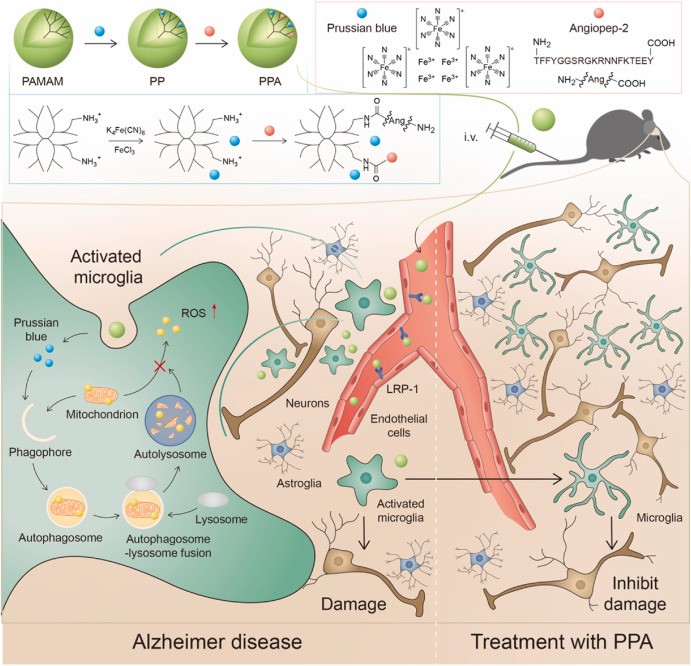Research Develop Blood-Brain Barrier Permeable Nanoparticles for Alzheimer's Disease Treatment
Date:23-08-2022 | 【Print】 【close】
Alzheimer's disease (AD) is a complex neurodegenerative disease that leads to insidious deterioration of brain functions and is considered the sixth leading cause of death in the world. Current treatments for Alzheimer's disease (AD) that focus on inhibition of Aβ aggregation failed to show effectiveness in people who already had Alzheimer's symptoms. Strategies that synergistically exert neuroprotection and alleviation of oxidative stress could be a promising approach to correct the pathological brain microenvironment.
Now, a research team led by Dr. YU Yin from the Shenzhen Institute of Advanced Technology (SIAT), Chinese Academy of Science, has reported the development of a Blood-brain barrier permeable nanoparticles for Alzheimer's disease treatment based on selective mitophagy of microglia by restoration of mitochondrial function.
The study was published in Biomaterials on Aug. 12
In this study, the research team reported a hybrid nanoparticle platform that enables high BBB transport efficacy and removal of intracellular ROS.
"We achieved this by incorporation of Angiopep-2 (ANG-2) modified Poly (amidoamine) (PAMAM) with Prussian blue (PB) nanoparticles to increase the BBB transport efficacy and circulation lifetime of PB," said Dr. YU, "with the assumption that the hybrid nanoparticles would synergistically scavenge the intracellular ROS and modulate of microglia to treat AD."
Through specifically labelling the biomarker for autophagy, the team confirmed the synergistic effect of PPA NPs for normalization of microenvironment mainly because PPA NPs could regulate the metabolism of microglia through activating mitophagy.
The results also showed that by suppressing hyperactive microglia, the Aβ deposition in the brain tissue also drops significantly. As neuroinflammation, oxidative damage and Aβ deposition are important promoters of neuronal damage in Alzheimer's disease, the improvement of the microenvironment in the brain tissue directly contributes to the inhibition of neuronal damage and the improvement of memory function of APP/PS1 mice.
"To the best of our knowledge, this is the first report to demonstrate PB's neuroprotective properties and restoration of mitochondrial function of microglia for AD treatment," said Dr. YU
The activation of microglia is regarded as be an important skeptic of culprit of AD. The new findings have indicated that PPA nanoparticles can reverse the pathological activation of microglia.
"Our results suggest this hybrid nanoparticles platform could become promising neuroprotective agents for the treatment of AD by inducing autophagy of microglia and correction of the brain microenvironment," said Dr. ZHONG Gang, the lead author of the study.

Scheme 1. Illustration of the microglia induced AD microenvironment and mechanisms of regulating the metabolism of microglia through activating mitophagy. (Scheme by Dr. YU)
Media Contact:
ZHANG Xiaomin
Email:xm.zhang@siat.ac.cn